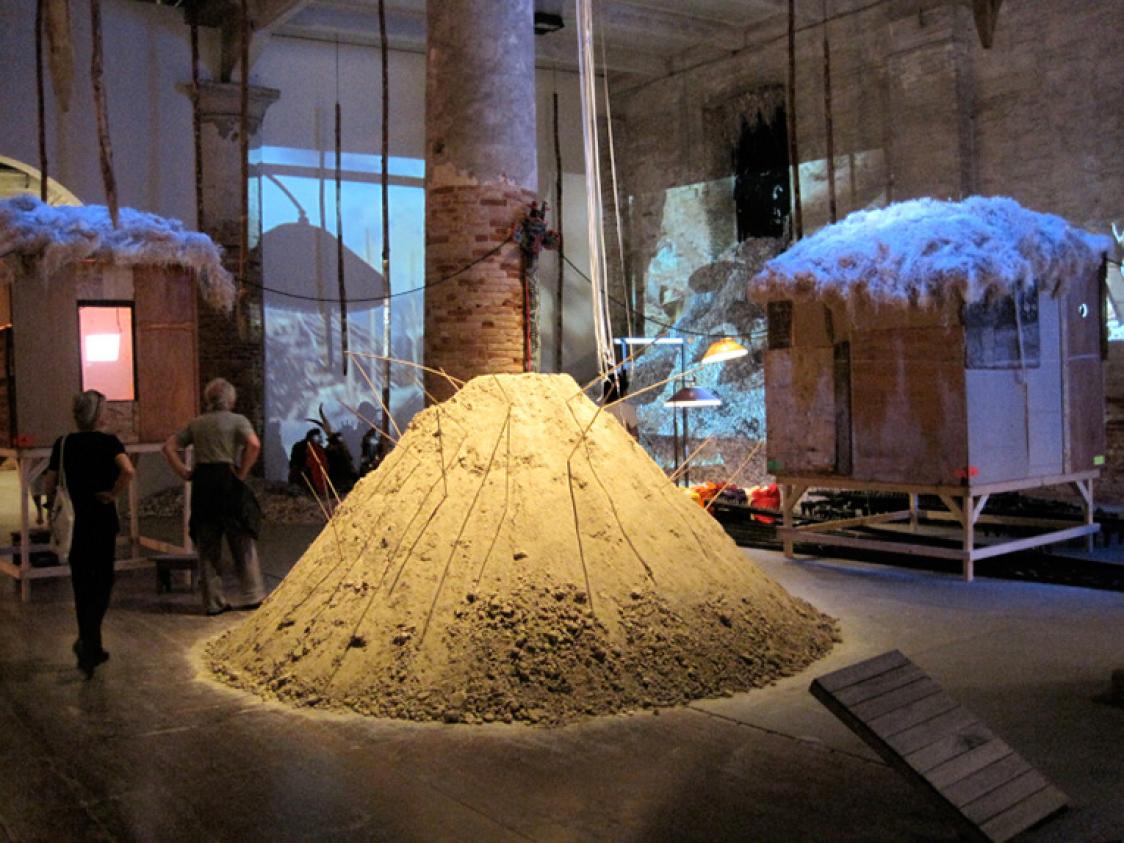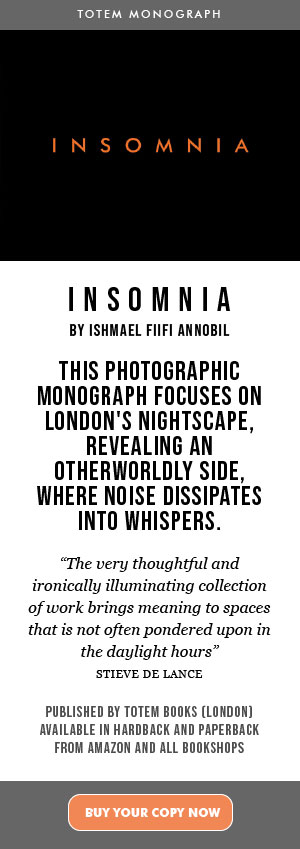WHO KNOWS TOMORROW
El Anatsui, Zarina Bhimji, António Ole, Yinka Shonibare, Pascale Marthine Tayou
Venues: Alte Nationalgalerie, Friedrichswerdersche Kirche, Neue Nationalgalerie, Hamburger Bahnhof – Museum für Gegenwart – Berlin.
Duration: June 4 - September 26, 2010
This summer, five internationally renowned artists of African descent will show their art on the grounds of the Nationalgalerie Berlin. El Anatsui, Zarina Bhimji, António Ole, Yinka Shonibare, and Pascale Marthine Tayou have been invited to present themselves in the various, architecturally significant buildings in which the Nationalgalerie accommodates its large collections of art from the 19th to 21st century. Their artistic treatment of the different stylistic, political, and social references will conspicuously mark the buildings and their collections during the course of the project. The ensemble of the Nationalgalerie will thus become an itinerary of large-scale, sculptural, and installation-based works, which are for the most part created outdoors in a site-specific manner.
The participating artists prompt a dialog on questions that, in face of the current radical economic, social and political changes, are more relevant that ever. Is uncertainty regarding the future the greatest certainty we now possess? The title of the exhibition, “Who Knows Tomorrow,” was inspired by an inscription on a small bus in Africa that was photographed by chance. This maxim of life widespread in Africa now stands for the meaning-generating theme of the exhibition.
Field of projection and tension
A Nationalgalerie is and always has been a mirror and the expression of the nation’s history and present. Each of its buildings is linked to specific historical situations. The exhibition uses this context as a field of projection and tension. It looks to the past, to the future, and especially to the present. The works of the participating contemporary artists address issues related to identity, globalization, and history. Far from claiming to represent or, even less, appropriate current African art production, the exhibition is instead dedicated to leaving monuments of German history to artists of another continent, raising the question as to what and whose history is narrated and written down. How does art contribute to overcoming (art) historical constructions, clichés, and stereotypes?
German history in view of museum architecture—and African reflection
The artistic projects reveal the entanglements and connections between Africa and Europe: The contours of the political map of the African continent still existing today were marked out at the “Berlin Africa Conference” in 1884/85, sealing the division of Africa among the Western powers. Hence, the history of Africa’s colonization is closely linked to the situation of Berlin at the end of the 19th and the beginning of the 20th century. Fifty years ago, in 1960, seventeen states initially became independent. Both historical events are connected to questions of a national sense of belonging and identity.
Artists always respond to these changes in a seismographic and sensitive manner. This will also be revealed in the works being created in Berlin.
El Anatsui, born in Ghana in and today living and working in Nigeria, will present his work in the columned atrium of the Alte Nationalgalerie with its massive gable and the inscription “DER DEUTSCHEN KUNST MDCCCLXXI.” He counters the sweeping architectural emotiveness with his strict economy of materials; recycling materials form the basis of his work.
Yinka Shonibare MBE, born in London in 1962 and of Nigerian descent, will exhibit in the Friedrichswerdersche Kirche. With its neo-Gothic shape and red brick façade, the church bears witness to great patriotic convictions—for bricks and Gothic have always counted as originally German. Amidst the displayed 19th-century paintings, which here embody the spirit of Goethe’s time, Shonibare’s works address the economic background of European colonialism and reveal a historiography written with a colonial mindset. The artist’s “trademark” is the utilization of so-called “African” textiles with their colorful patterns, giving rise to questions of identity.
Pascale Marthine Tayou, born in Cameroon in 1967, will develop an installation for the entrance area on the terrace of the Neue Nationalgalerie. The Neue Nationalgalerie by Mies van der Rohe is an icon of modern architecture. It opened in 1968 and reflected the transparency and spaciousness of the former Federal Republic’s self-understanding. Here, it will lend the African continent great visibility and question to what extent the insignia of African nation and identity forging are indeed of use.
For António Ole, born in Angola in 1951 and today living in Luanda, the Hamburger Bahnhof – Museum für Gegenwart – Berlin will be the venue of his art. The museum’s origin is closely linked to German history after 1989. Since António Ole’s entire oeuvre is based on impressive remembrance work related to his continent, he will narrate untold stories that are characterized by slavery, poverty, war, and the gradual decline of all structures. The work will reveal the often unknown connections to Africa.
Zarina Bhimji was born in Uganda in 1963 as the daughter of an Indian immigrant family and has been living in London since 1974, after Idi Amin expelled all Asians from Uganda. Bhimji will exhibit a video work inside the Hamburger Bahnhof and—like António Ole—use the interconnectedness of Africa and Europe as a foil for her work. Bhimji’s pieces are always intense narrations that unfold events linked to each other.
The exhibition is curated by Udo Kittelmann, Nationalgalerie – Staatliche Museen zu Berlin; Chika Okeke-Agulu, Princeton University/NJ; Britta Schmitz, Nationalgalerie – Staatliche Museen zu Berlin.
Catalogue
ISBN 978-3-88609-688-0
Verlag der Buchhandlung Walther Koenig GmbH & Co. KG
Eva Möller, Leitung Vertrieb und PR / Head of Distribution and PR
Tel.: +49 (0) 221 2 05 96-53, Fax: +49 (0) 221 2 05 96-60
eva.moeller@buchhandlung-walther-koenig.de
The book accompanying the exhibition, “Who Knows Tomorrow,” is not a classical catalogue in the narrower sense. It is an interdisciplinary reader contextualizing and enriching the exhibition project from different perspectives. To this end, African and European authors have been invited to reflect on the historical and present-day diversity of the continent, the German-African relations, and the progressiveness of Africa that bears a promising future. The reader brings together essayistic texts and academic contributions, presenting rich, hitherto rarely published map material of Africa, mainly drawn from the stock of the Stiftung Preußischer Kulturbesitz. It also offers a forum for the artists, who designed the artists’ pages. The reader would like to address both an expert audience and a wider public, and is therefore conceived as a reading source for all those interested in Africa.
Authors: Chimamanda Ngozi Adichi, Akin Adesokan, Anthony Asiwaju, Wolfgang Crom, Nnamdi Elleh, Fatima El-Tayeb, Bartholomäus Grill, Ryszard Kapuscinski, Horst Köhler, Dambisia Moyo, Chika Okeke-Agulu, Britta Schmitz, Helmut Strizek, Ulf Vieke, Abdourahman Ali Waberi, Paul Zeleza, Joachim Zeller, and a conversation between Udo Kittelmann and Christoph Schlingensief.
Opening hours
Alte Nationalgalerie: Tue-Sun 10a.m.-6 p.m., Thu 10a.m.-10 p.m.;
Friedrichswerdersche Kirche: Mon-Sun 10a.m.-6 p.m.;
Neue Nationalgalerie: Tue, Wed + Fri 10a.m.-6 p.m., Thu 10a.m.-10 p.m., Sat + Sun 11a.m.-6 p.m.;
Hamburger Bahnhof – Museum für Gegenwart – Berlin:
Mon-Fri 10a.m.-6 p.m., Sat 11a.m.-8 p.m., Sun 11a.m.-6 p.m.
The works in front of the Alte Nationalgalerie, the Neue Nationalgalerie and the Hamburger Bahnhof can also be viewed outside the opening hours.
Contact
Exhibition office at the Hamburger Bahnhof – Museum für Gegenwart – Berlin
Invalidenstr. 50-51, 10557 Berlin
Tel. +49 (0) 30 3978 34 -36, - 62, Fax +49 (0) 30 3978 3413,
hbf@smb.spk-berlin.de www.hamburgerbahnhof.de
Image Credits
(1) Tayou, Human Being



